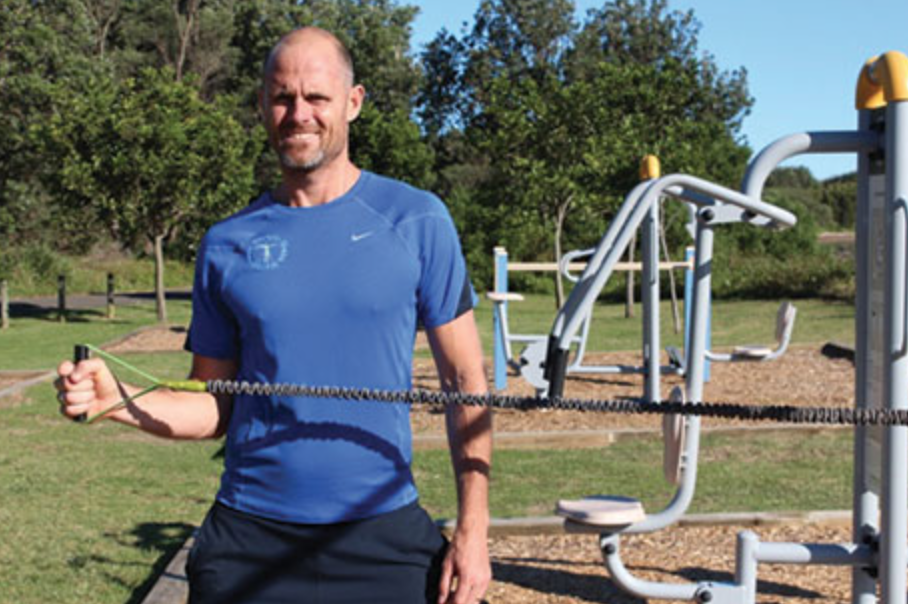When Nathan Martin first began his career as a strength and conditioning coach, he never envisioned that he would enter on a path solely dedicated to training tennis players. In actuality, it was his wife Giselle who had a vision to work with players on the Tour.
The duo devised a plan to accomplish this feat, and the rest is history. Today, they operate their world renowned Tennis Fitness brand and have trained five world number one players over the life of the business.
Through the journey of creating Tennis Fitness, Nathan developed a passion for the sport after learning the ins and outs of the game. “Being a trainer, I think tennis is the pinnacle of sport because it is so complex in many ways,” he explained.
Nathan and Giselle have built a breadth of experience working with athletes such as Lleyton Hewitt, Sam Stosur, Martin Navratilova, Jennifer Capriati, Svetlana Kuznetsova and Monica Seles. The lessons learned have inspired them to create their own ‘Martin Method’ brand to achieve success with players of all levels.
According to Nathan, the success they have experienced has come from a unique focus on the mental resilience involved with high-level training. “As much as we use the physical aspect, you also start to realize how important training is to build up resilience and fortify an athlete’s mindset. It’s about constantly encouraging them to remember what training they’ve done and motivating them throughout,” he said.
“Whenever we do any programming or set training, we always ask ourselves, ‘Why are we doing this?,’” said Nathan. “If you can’t answer that, you don’t know why you’re doing anything, and if you don’t know why you’re doing it, you don’t know what the result is going to be.”
Another component that distinguishes Tennis Fitness from other strength and conditioning programs is their method behind training female tennis players. In fact, Tennis Fitness has recently partnered with the WTCA to help educate female players and their coaches on the science behind fitness training.
“Having worked with a lot of high-level female athletes and learning what they do and how they do those things, we feel like we can give people a look into what’s going on,” said Nathan. ‘We’re really excited to educate and encourage more female athletes and coaches to get out there to try to work harder and do the right things. Second, we want to produce some really great female athletes.”
Tennis Fitness certainly knows a thing or two about producing great female athletes, which begins with their training approach. “With female athletes, you need to give them more encouragement and support. I always tell them the reason behind why I’m giving them an exercise and give them more encouragement to get it done as well,” said Nathan.
“As trainers, we need to build up more trust with female athletes. You need to let them know that you’ve got their best interest at heart and that you’re structuring this program for them. It’s not about you, it’s for them. Reassure them we’re all on the same page and we’re all going in the same direction,” he explained.
In terms of the specific exercises that should be performed both on and off the court, Nathan emphasizes the importance of strengthening the posterior chain for female tennis players. “Targeting the posterior chain is really important from a strength perspective. From there, we can develop that strength into power and more dynamic training and explosive movement,” he said.
“On court, we focus on their first step – giving them drills and encouraging them to really focus on that one, two pop step on court,” said Nathan. “Working on deceleration is also important. We want to make sure they can do that effectively because that’s where we burn a lot of energy. In the game of tennis, you have to do that up to 10 times a point. It’s not just about speeding up, it’s about slowing down. We burn more fuel and our body is more susceptible to injury at that phase.”
When it comes to strength and conditioning training, Nathan believes the most common mistake made by tennis players is performing movements beyond their experience level, which can lead to unnecessary injury down the road.
“What we really need to encourage people to do is build a base,” Nathan urged. “First, they need to technically be able to perform a movement. We need to strengthen that movement and then we can start making that movement more progressive and dynamic.”
“Once you’ve got the base built, it’s very easy to build on top. It’s like building a house. If you get the foundation right, the rest of the house will go up easy. If the foundation is not right, somewhere along the track, you’re going to have problems with the house,” he said.
Quite like the solid foundation Nathan and Giselle have been building within their athletes for many years, the newly formed partnership between the WTCA and Tennis Fitness will lay the groundwork for positively impacting the road ahead for female tennis players.

